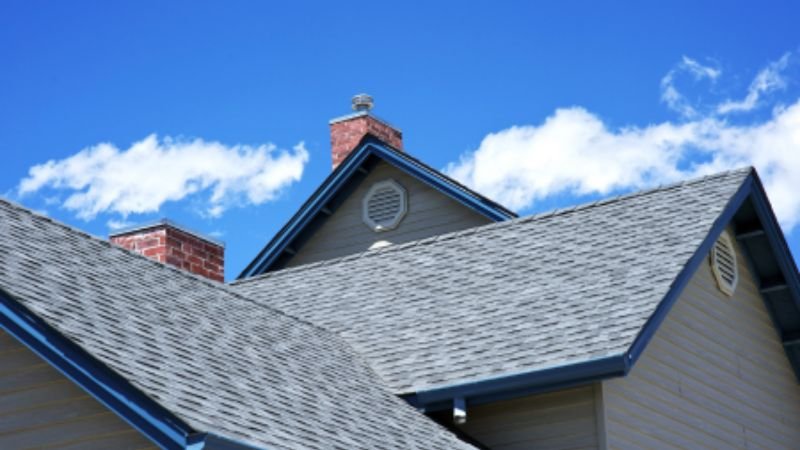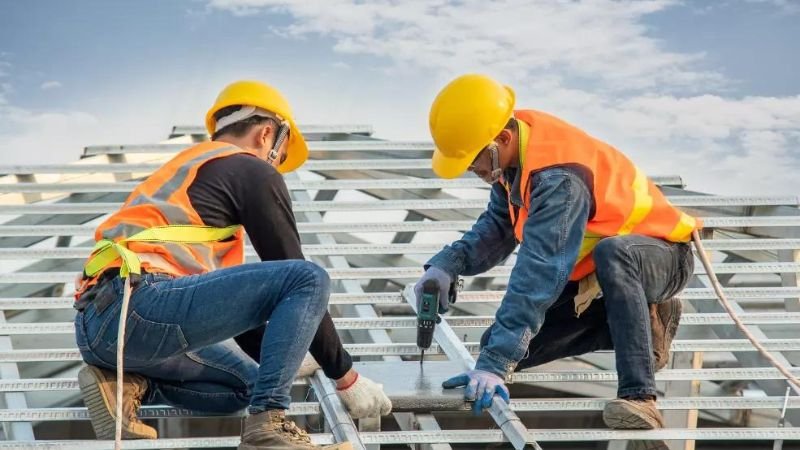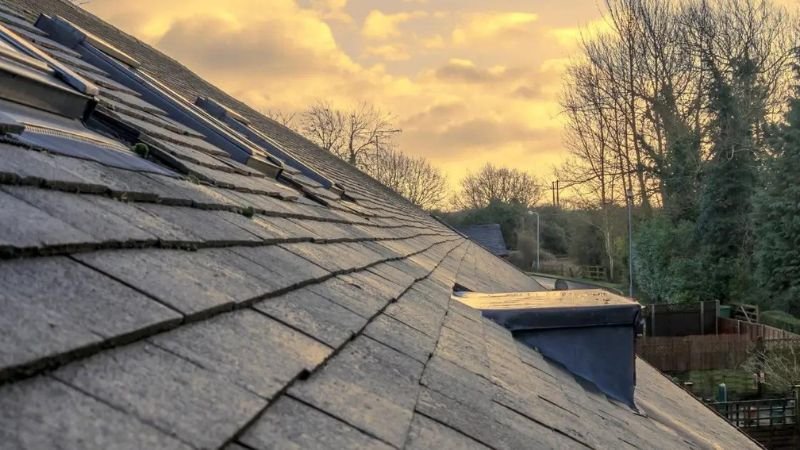One of the most important parts of your house is its roof since it protects you from the weather and enhances the overall appearance. Extending the lifespan of your roof can save you thousands of dollars in repairs and replacements. In this blog post, we will explore ten effective ways to ensure your roof remains in top condition for years to come. From regular inspections to choosing the right materials, these practical tips will help you maintain a durable and long-lasting roof. Read on to discover how you can maximize the life of your roof and protect your home investment.
10 Ways To Extend The Lifespan Of Your Roof
1. Regular Inspections
You should get regular inspections done if you want your roof to last longer. Conducting thorough inspections at least twice a year, typically in the spring and fall, allows you to catch potential problems early. Look for visible damage such as missing, cracked, or curled shingles, which can indicate underlying issues. Additionally, check for moss or algae growth, as these organisms can retain moisture and lead to roof deterioration. Examine the flashing surrounding vents, skylights, and chimneys to make sure it is in good condition and not rusted or damaged. By addressing minor issues promptly, you can prevent them from developing into more significant problems that could compromise your roof’s integrity and require costly repairs.
Also, Read – 9 Storm Damage Roof Repair Tips For Homeowners
2. Clean Your Gutters
In order to keep water away from your roof and foundation, gutters are essential. When gutters are clogged with leaves, debris, or dirt, water can overflow and seep into the roof structure, causing damage over time. Regularly cleaning your gutters ensures proper water drainage and prevents moisture buildup that can lead to rot and mold. Make it a habit to clean your gutters at least twice a year, especially after heavy storms or during the fall when leaves are abundant. To decrease debris accumulation and lessen the frequency of cleaning, think about adding gutter guards. Properly maintained gutters help protect your roof and extend its lifespan by preventing water-related issues.
3. Trim Overhanging Branches
Trees near your home can provide shade and enhance the aesthetic appeal of your property, but overhanging branches can pose a significant risk to your roof. During storms or high winds, these branches can scrape against the roof surface, damaging shingles and creating openings for water infiltration. Regularly trimming overhanging branches reduces the risk of physical damage and prevents leaves and debris from accumulating on the roof, which can retain moisture and promote the growth of moss and algae. By keeping trees well-trimmed and at a safe distance from your roof, you can safeguard it against potential damage and prolong its lifespan.
4. Ensure Proper Ventilation
Proper ventilation is crucial for maintaining a healthy roof and extending its lifespan. Shingles may deteriorate earlier than expected due to excessive heat accumulation in the attic brought on by inadequate ventilation. It can also result in moisture accumulation, which can lead to mold growth and rot. Ensure your attic has adequate ventilation by installing ridge vents, soffit vents, or gable vents to allow for proper air circulation. Good ventilation helps regulate temperature and moisture levels, reducing the risk of damage and prolonging the life of your roof. Regularly check and maintain your ventilation system to ensure it functions effectively.
Also, Read – 7 Tips To Deal With Roofing Storm Damage Repairs
5. Address Leaks Promptly
Even minor leaks can cause significant damage to your roof if left unaddressed. Water infiltration can lead to rot, mold growth, and structural damage. As soon as you notice signs of a leak, such as water stains on ceilings or walls, musty odors, or dripping water, take immediate action to identify the source and fix the problem. Ignoring leaks can result in costly repairs and compromise the overall integrity of your roof. Regularly inspect your roof for any signs of leaks, and promptly repair or replace damaged shingles, flashing, or other components to prevent further damage.
6. Install Proper Insulation
Proper insulation not only enhances the energy efficiency of your home but also plays a vital role in extending the lifespan of your roof. A buildup of heat in the attic due to inadequate insulation can accelerate the deterioration of shingles. It can also result in ice dams during the winter, which can damage the roof structure. Ensure your attic is well-insulated to maintain a consistent temperature and prevent excessive heat or cold from affecting your roof. Consult with a professional to determine the appropriate insulation type and amount for your home, and consider upgrading if necessary to protect your roof and improve energy efficiency.
7. Use High-Quality Roofing Materials
Investing in high-quality roofing materials is one of the best ways to extend the lifespan of your roof. While cheaper materials may save you money initially, they are often less durable and more prone to damage. Opt for materials that are known for their longevity, such as asphalt shingles, metal roofing, or clay tiles. High-quality materials are designed to withstand harsh weather conditions, resist impact, and provide better overall performance. Additionally, ensure that the materials are installed correctly by hiring a reputable roofing contractor. Proper installation, combined with quality materials, will help your roof last longer and provide better protection for your home.
8. Apply Roof Coating
Applying a roof coating is an effective way to protect your roof from the elements and extend its lifespan. Roof coatings create a barrier that reflects UV rays, reduces heat absorption, and provides additional waterproofing. They can also help seal small cracks and prevent leaks. Different types of coatings are available, including acrylic, silicone, and elastomeric coatings, each offering unique benefits. Consult with a roofing professional to determine the best coating for your specific roof type and climate. Regularly applying roof coatings can enhance the durability of your roof, improve energy efficiency, and prolong its life.
9. Prevent Ice Dams
Ice dams can cause significant damage to your roof during the winter months. They form when snow on the roof melts, then refreezes at the eaves, preventing proper drainage and causing water to back up under the shingles. This can lead to leaks, rot, and structural damage. To prevent ice dams, ensure your attic is well-insulated and ventilated to maintain a consistent temperature and prevent heat from escaping. Clear snow from the roof promptly using a roof rake, and consider installing ice and water shields along the eaves for additional protection. Taking these preventive measures can help protect your roof from ice dam-related damage.
10. Schedule Professional Maintenance
While regular DIY inspections and maintenance are essential, scheduling professional roof maintenance is equally important. Professional roofers have the expertise to identify and address potential issues that may not be apparent to homeowners. They can conduct thorough inspections, clean gutters, repair minor damages, and provide valuable advice on maintaining your roof. Consider scheduling a professional roof inspection and maintenance service at least once a year. Professional maintenance helps ensure that your roof remains in optimal condition, extending its lifespan and preventing costly repairs in the future.
Conclusion
Maintaining your roof doesn’t have to be overwhelming. By implementing these ten strategies, you can significantly extend the lifespan of your roof, ensuring it remains functional and aesthetically pleasing for years to come. Regular maintenance, timely repairs, and choosing the right materials are key to achieving a durable roof. Protect your home and save money in the long run by taking proactive steps to care for your roof today.
FAQs
How often should I inspect my roof?
Inspect your roof at least twice a year, preferably in the spring and fall, to identify and address any potential issues early.
What are the signs that my roof needs repairs?
Look for signs such as missing or damaged shingles, water stains on ceilings, sagging roof areas, and granules in gutters, indicating your roof may need repairs.



